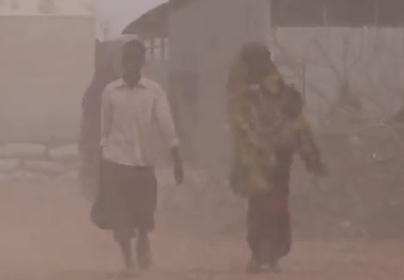As expected, the United Nations declared a famine in two regions in Southern Somalia. This is the first time since the mid 1980s that the UN has officially declared a famine.
Evidence of severely reduced food access, acute malnutrition, and crude mortality indicates that a famine is currently ongoing in two areas of southern Somalia: the Bakool agropastoral livelihood zones and all areas of Lower Shabelle. This crisis represents the most serious food insecurity situation in the world today, in terms of both scale and severity. Current humanitarian response is inadequate to meet emergency needs. Assuming current levels of response, evidence suggests that famine across all regions of the south will occur in the coming 1-2 months. A massive multisectoral response is critical to prevent additional deaths and total livelihood/social collapse and most immediately, interventions to improve food access and to address health/nutrition issues are needed.
The current crisis in southern Somalia is driven by a combination of factors:
-The total failure of the October‐December Deyr rains (secondary season) and the poor performance of the April‐June Gu rains (primary season) have resulted in crop failure, reduced labor demand, poor livestock body conditions, and excess animal mortality
-Local cereal prices across the south are far above average, more than 2 to 3 times 2010 prices in some areas, and continue to rise. As a result, both livestock to cereal and wage to cereal terms of trade have deteriorated substantially. Across all livelihoods, poor households (~30 percent of the population) are unable to meet basic food needs and have limited ability to cope with these food deficits
-During July, FSNAU conducted 17 representative nutrition and mortality surveys across southern Somalia; results are available for 11 surveys. The prevalence of acute malnutrition exceeds 20 percent in all areas and is higher than 38 percent (with severe acute malnutrition higher than 14 percent) in 9 of the 11 survey areas. The highest recorded levels of acute malnutrition are in Bay, Bakool, and Gedo (agropastoral) where the GAM prevalence exceeds 50 percent. The U.S. Centers for Disease Control (CDC) has verified these findings.
-Population‐wide death rates are above the famine threshold (2/10,000/day) in two areas (Bakool agropastoral, and all areas of Lower Shabelle) and are elevated across the south. Under‐5 death rates are higher than 4/10,000/day in all areas of the south where data is available, peaking at 13‐20/10,000/day in riverine and agropastoral areas of Lower Shabelle. Tens of thousands of people have died in the past three months.
The the population of the regions affected is about 6.6 million. The number of people said to be at risk from famine is 3.7 million. The UN Food Security and Nutritional Analysis unit for Somalia says that tens of thousands of lives can be saved if the international community acts fast. This includes immediate humanitarian relief and medium-term development programs that can help bring down the skyrocketing food prices.
